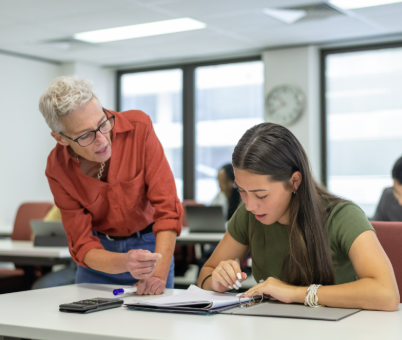Introduction
Technology is playing an increasingly important role in modern classrooms, especially in the delivery of personalized learning. With digital tools, educators can better understand student needs, adapt instruction in real time, and create engaging, learner-focused experiences. When used thoughtfully, technology can help educators support every student’s journey toward academic growth and confidence.
1. Enhancing Flexibility and Accessibility
Digital learning platforms allow students to learn at their own pace, review content as needed, and access materials from anywhere. This flexibility is especially beneficial for students who need extra time or prefer nontraditional learning environments. Technology removes some of the barriers that can hinder equal access to education.
2. Enabling Real-Time Feedback
Through interactive software and assessment tools, teachers can gather real-time data on student performance. This immediate insight helps educators tailor instruction to meet evolving needs, identify gaps in understanding, and celebrate progress. Personalized feedback supports growth and encourages continuous improvement.
3. Supporting Differentiated Instruction
Technology enables teachers to offer different versions of lessons or assignments based on individual learning profiles. Adaptive learning platforms adjust content difficulty automatically, ensuring each student is challenged appropriately. Visual, auditory, and interactive resources help address a variety of learning styles.
4. Encouraging Student Engagement
Interactive tools such as educational games, multimedia presentations, and discussion boards make learning more dynamic. These features promote active participation and help maintain student interest. Personalized learning becomes more enjoyable when students can connect with the material in ways that resonate with them.
5. Facilitating Goal Setting and Self-Monitoring
Many educational technologies include dashboards and progress trackers that help students set goals and monitor their own learning. This fosters a sense of responsibility and encourages learners to take ownership of their educational journey. Teachers can also use this data to provide guidance and adjust goals as needed.
6. Bridging Communication Gaps
Technology improves communication between teachers, students, and families. Messaging tools, online conferences, and shared learning platforms ensure that everyone stays informed and engaged. These tools create a supportive network around the learner.
Conclusion
Technology is not a substitute for good teaching—it is a tool that can enhance and personalize the learning experience. When integrated thoughtfully, it supports student agency, improves access to resources, and enables responsive teaching. By aligning technology use with educational goals, schools can create more inclusive, effective, and inspiring learning environments for all students.














